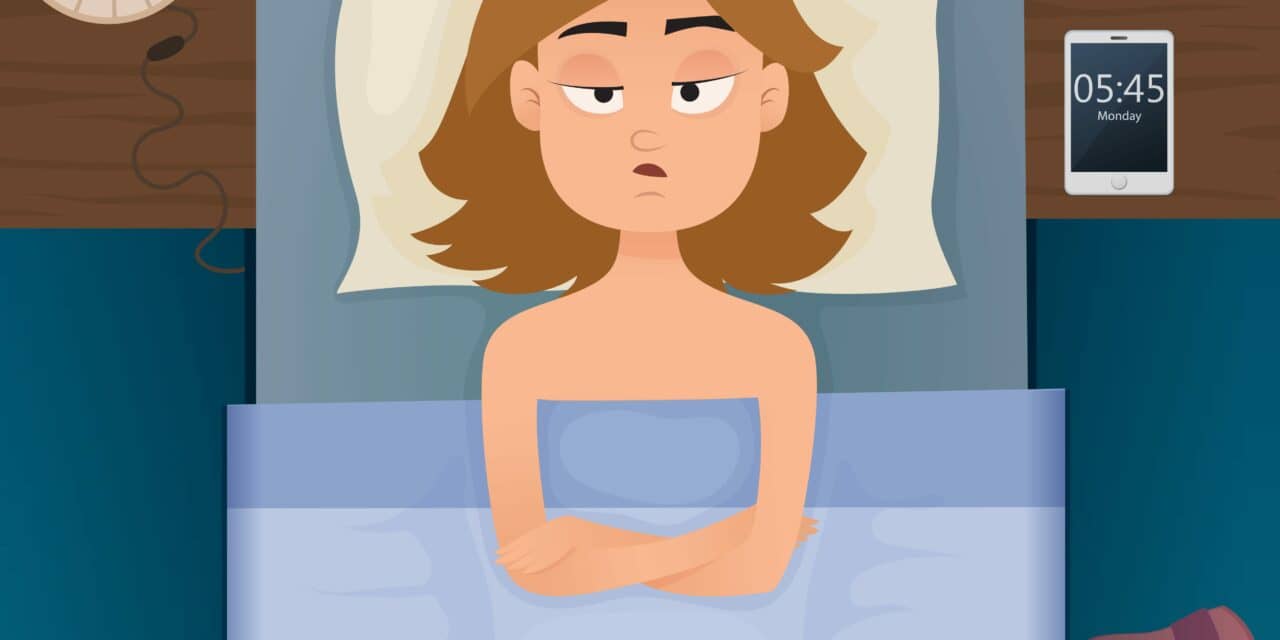A science journalist undergoes home sleep testing and receives different results on non-consecutive nights.
By Lisa Spear
A few years ago, I got the chance to take a home sleep test.
The pressure of having just one night with the test equipment made me feel like I needed to do everything perfectly. I needed to get the most perfect sleep, attach the sensors in just the right places, and place my finger not too far into the pulse oximeter. After all, I wanted to make the most of the recording time. I followed the instructions carefully, avoided lotions that could disrupt sensor signals, and trimmed my fingernail before slipping it into the pulse ox probe.
But my preoccupation with conducting the sleep test perfectly made me too anxious to sleep. It is advisable to sleep in a “normal” environment, but introducing electrodes, RIP belts, and pulse oximeters—and all the unfamiliar sensations that come with them—is fundamentally not normal. The slight sensations of sensors on my skin and the bite of the pulse oximeter on my finger distracted me from sleep.
Once I pressed the start button to begin the home sleep test recording, all I could do was lay there. It seemed that sleep would never come.
Ultimately, my fear of not doing the sleep test right became a self-fulfilling prophecy. I peeled off the sensors the next morning, bleary-eyed, and exhausted. I had barely slept. In the process of trying to conduct the test perfectly, I felt I had likely introduced errors into the resulting data.
I had taken this test as a demonstration unit from a manufacturer at a sleep conference, so my device transmitted the sleep test data wirelessly to the medical device company, which auto-scored it. I was told that my apnea-hypopnea index (AHI) was high enough that I may have mild sleep apnea. The medical device company representative told me to see a sleep physician.
When I eventually took another home sleep test, I felt much more comfortable with the device. And unlike the previous experience in a hotel, this time I slept in my own bed. This time, my recorded AHI was so low it was deemed insignificant.
My HST experience has made me an advocate for multi-night sleep studies. Sleep, as we all know, can vary from night to night. That can be due to lifestyle factors such as exercise or, in my case, sleeping in an unfamiliar environment with new equipment. I think it takes time to get used to the sensors.
In a recent study, researchers found that single-night sleep studies could miss moderate and mild obstructive sleep apnea up to 60% and 84% of the time, respectively.1
Another study, published in CHEST, which evaluated 10,340 patients, found that monitoring just one night’s worth of data resulted in significant misdiagnoses in OSA severity.2
By offering multi-night sleep studies, clinicians can give patients more time to get acquainted and comfortable with the test equipment.
Multi-night home sleep studies may come with additional costs and a slightly delayed diagnosis, but after my experience, I believe a single night of sleep data is just not enough.
References
1. Stöberl AS, Schwarz EI, Haile SR, et al. Night-to-night variability of obstructive sleep apnea. J Sleep Res. 2017 Dec;26(6):782-8.
2. Punjabi NM, Patil S, Crainiceanu C, Aurora RN. Variability and misclassification of sleep apnea severity based on multi-night testing. Chest. 2020 Jul;158(1):365-73.
Illustration 96386415 © Vesnushki | Dreamstime.com





